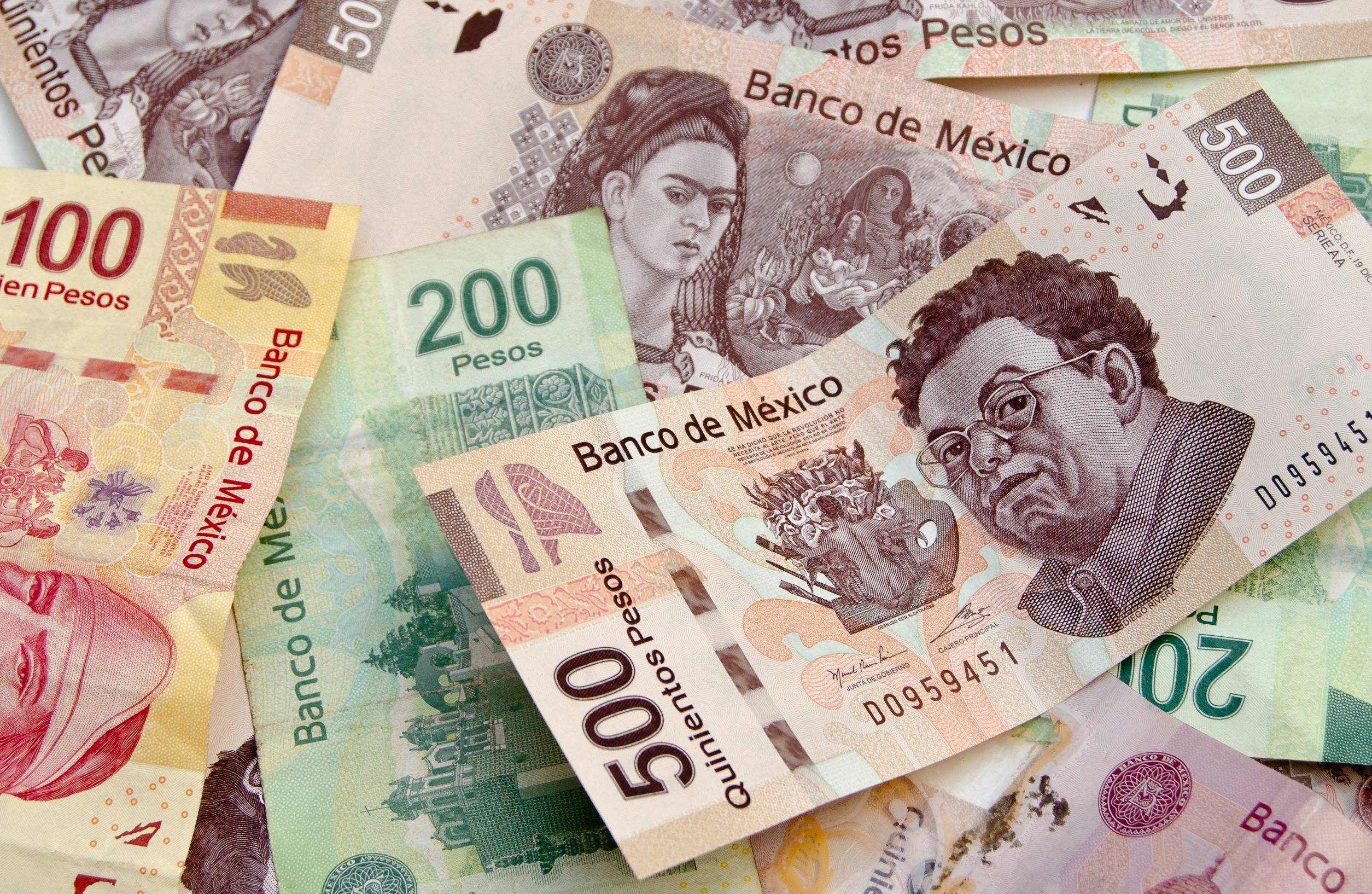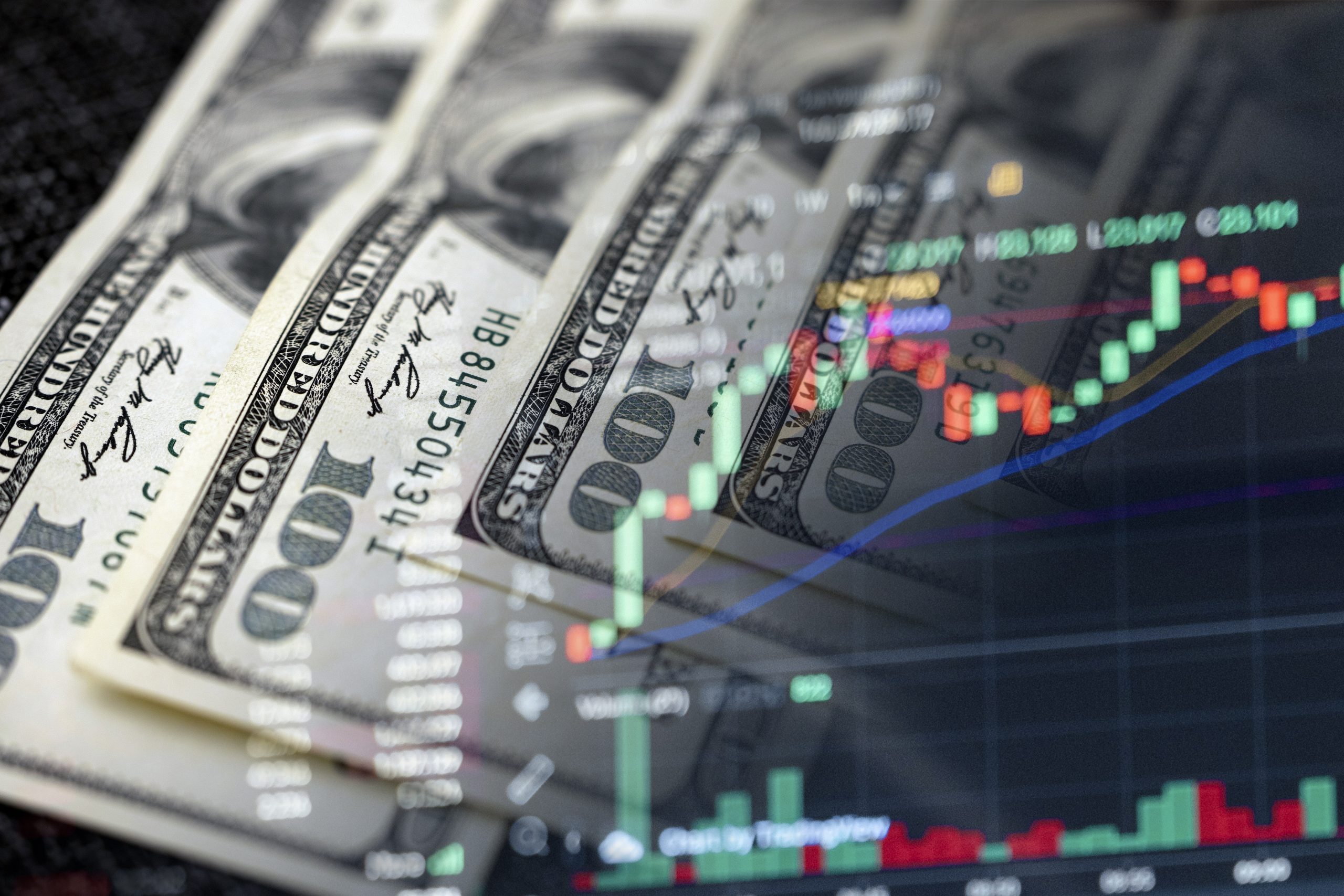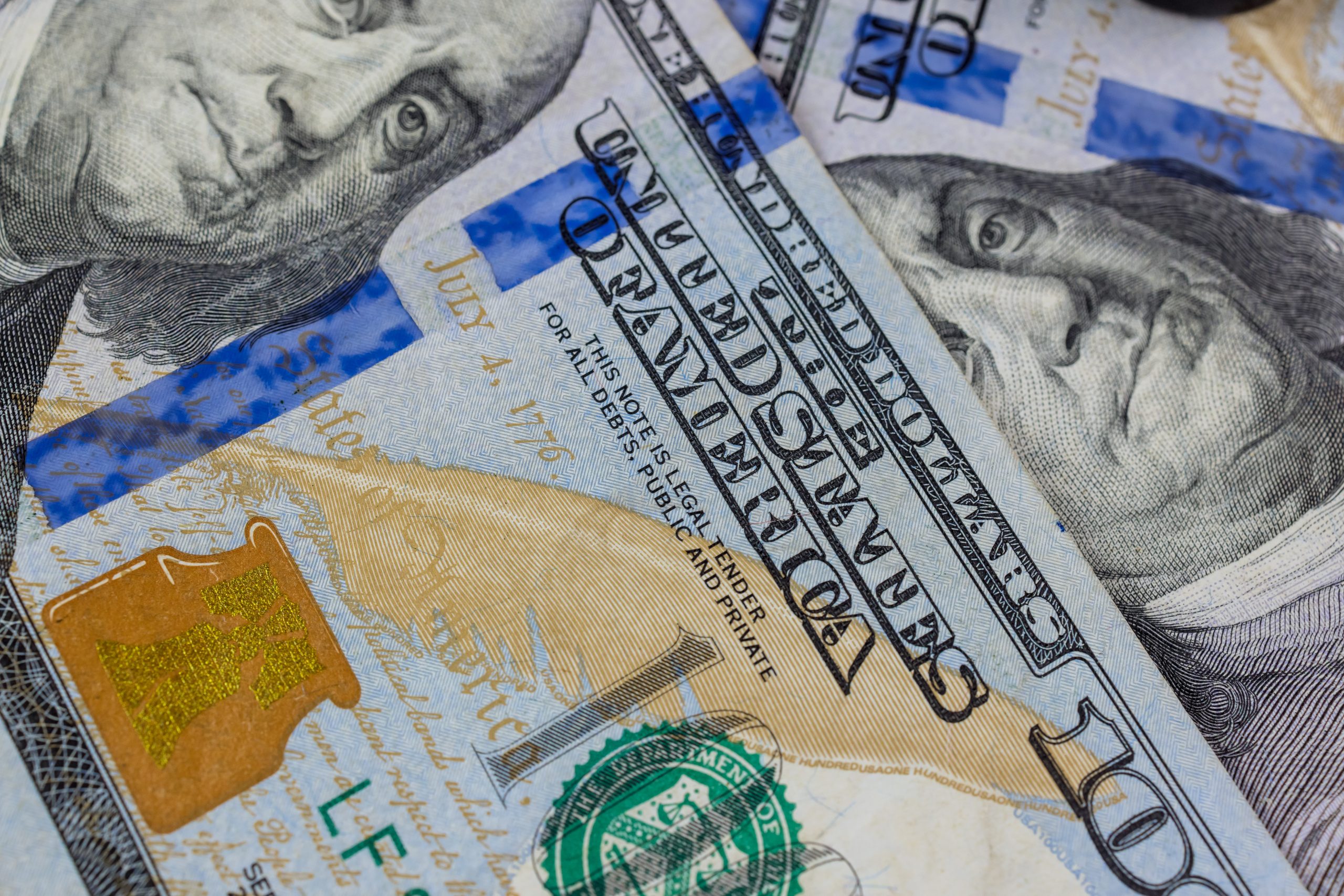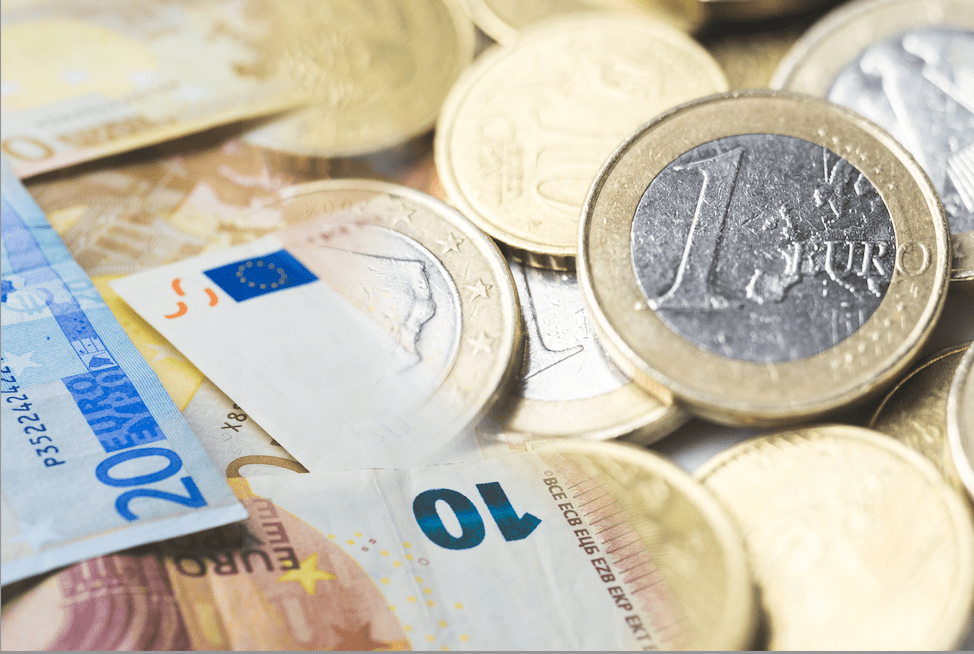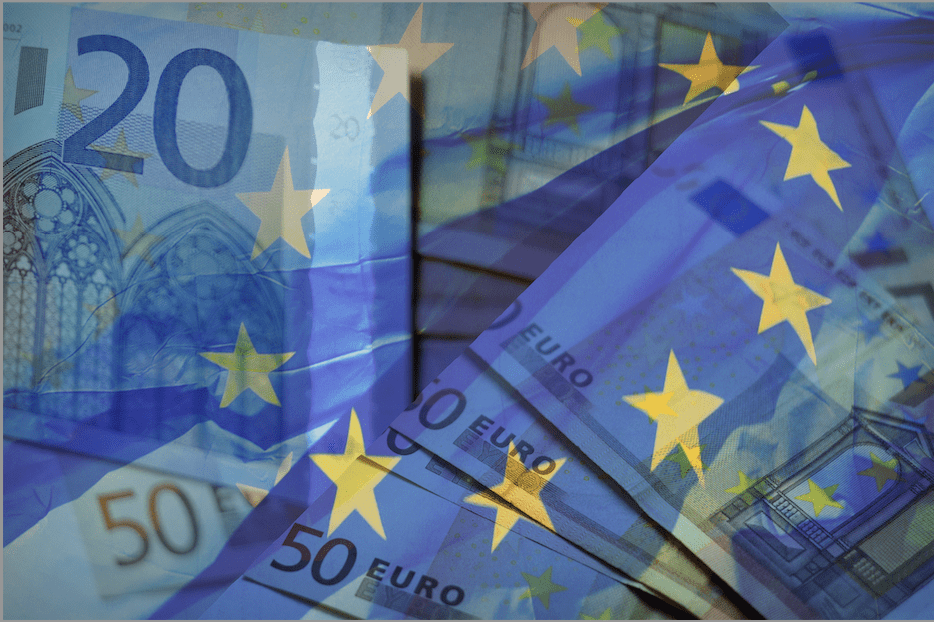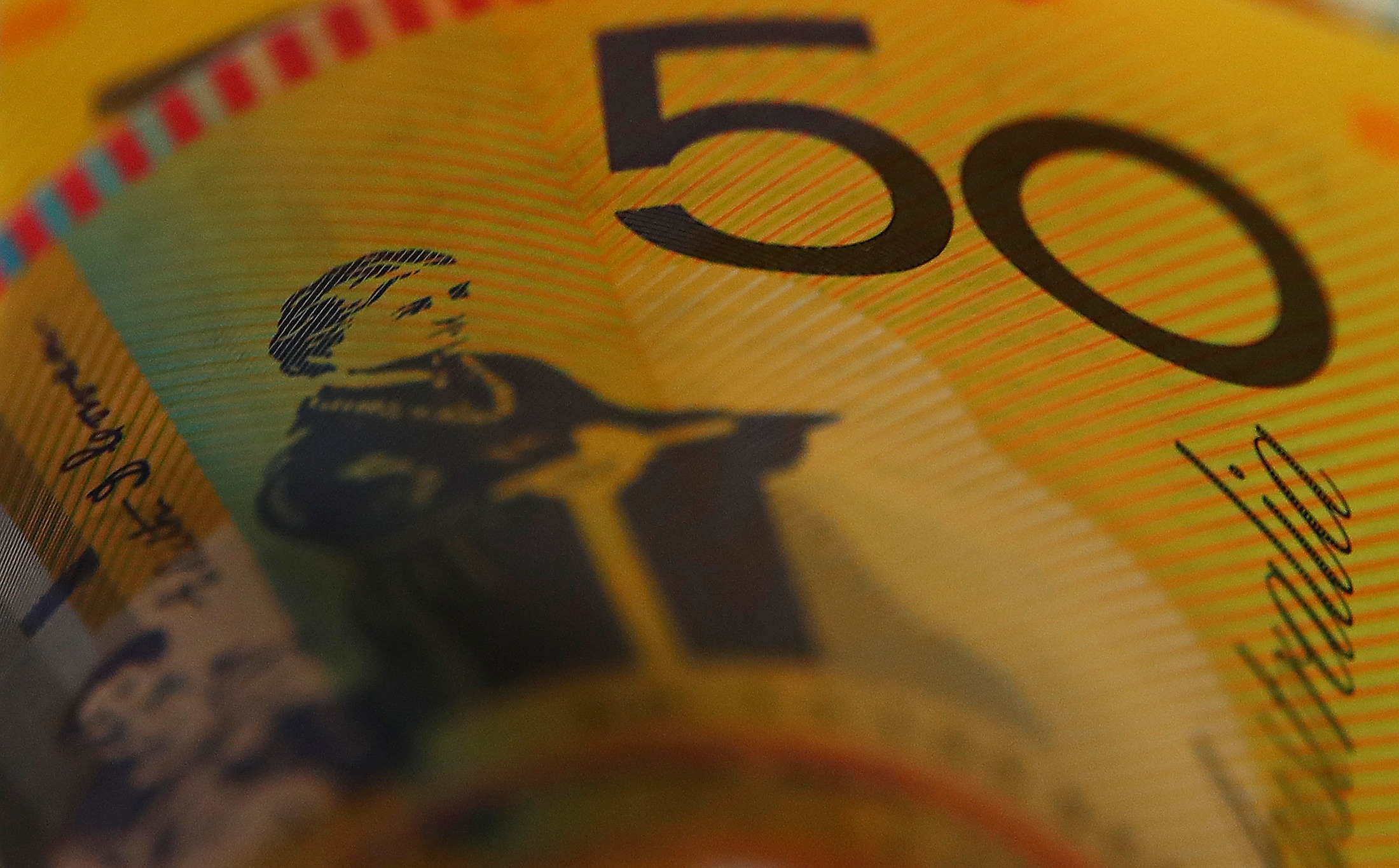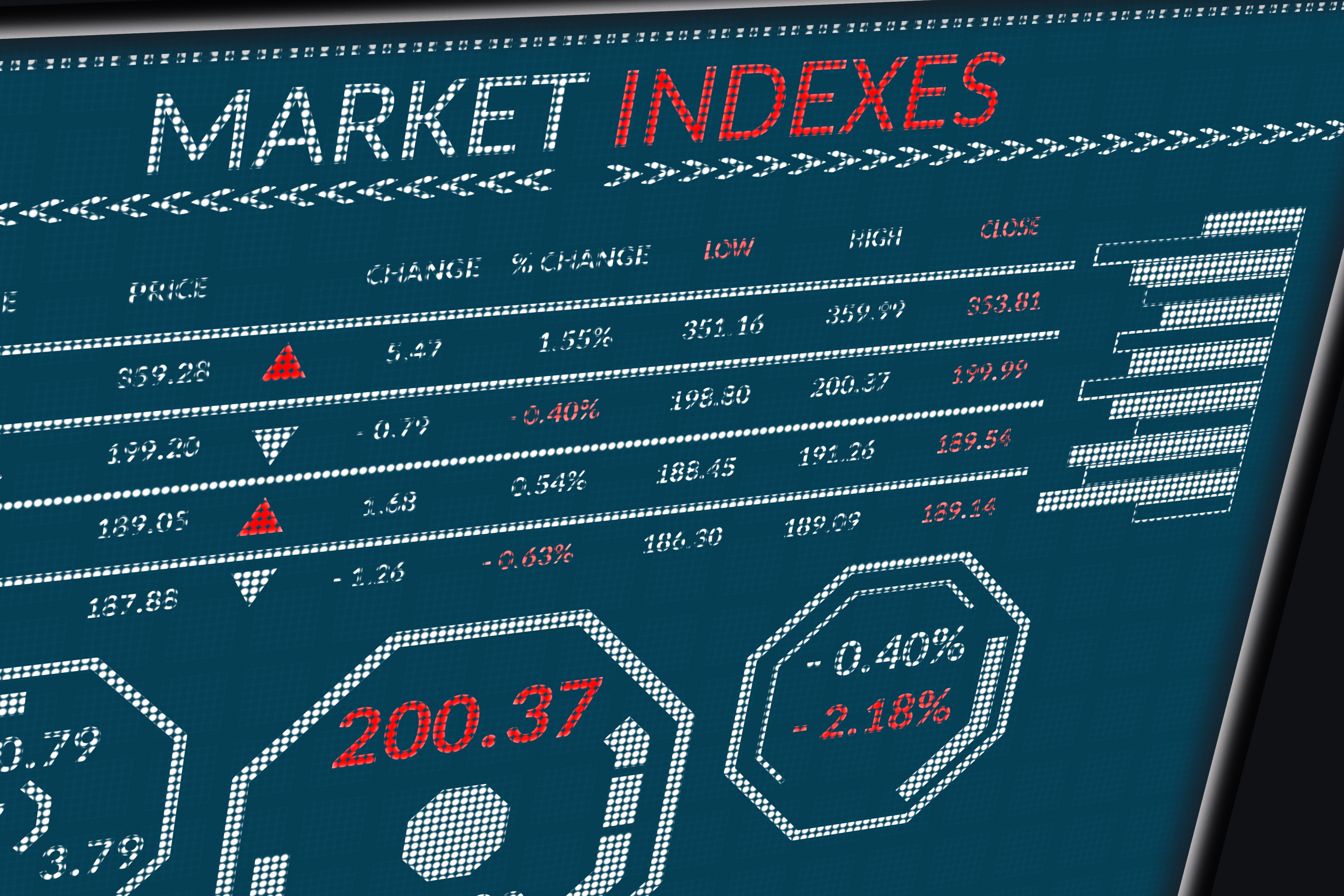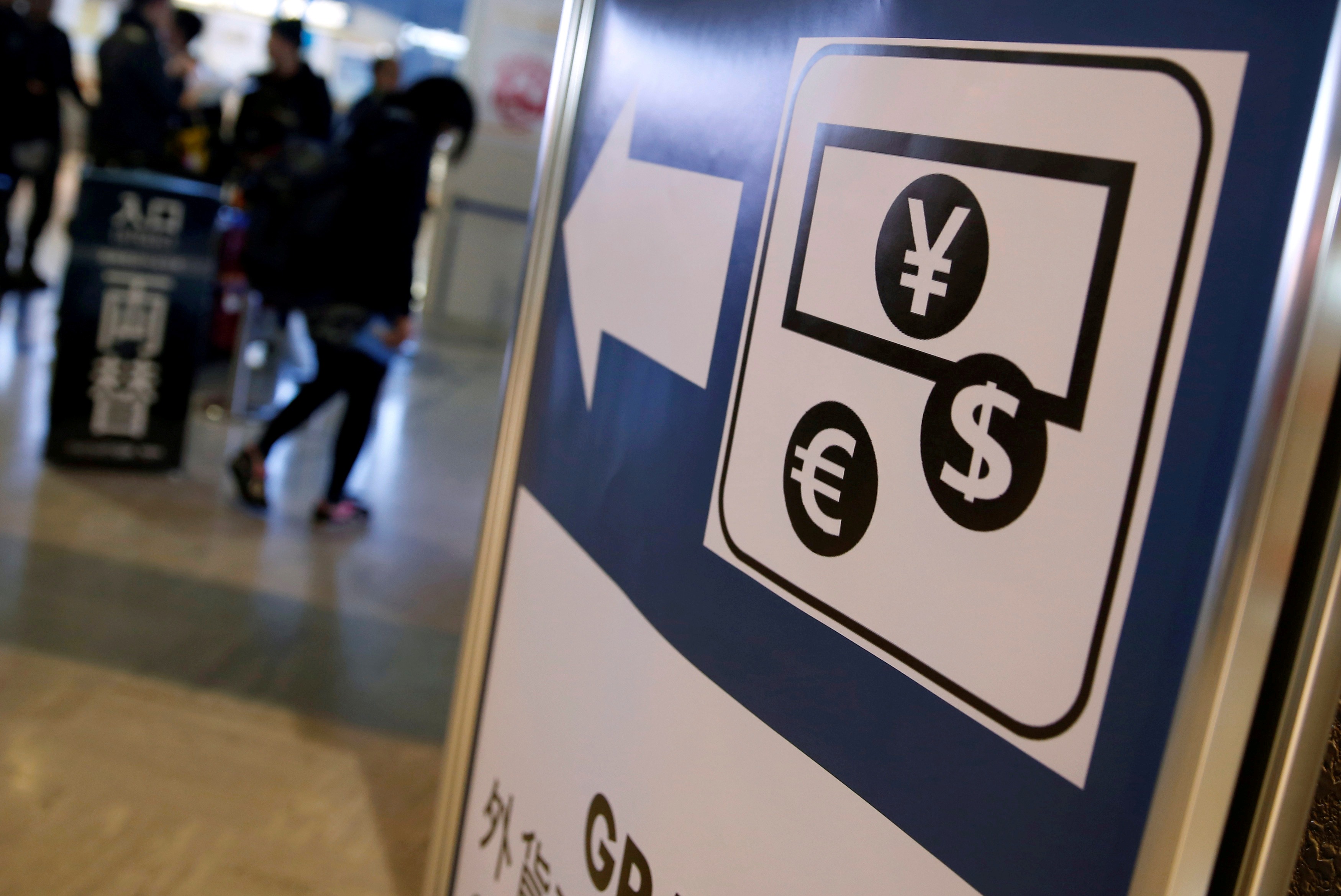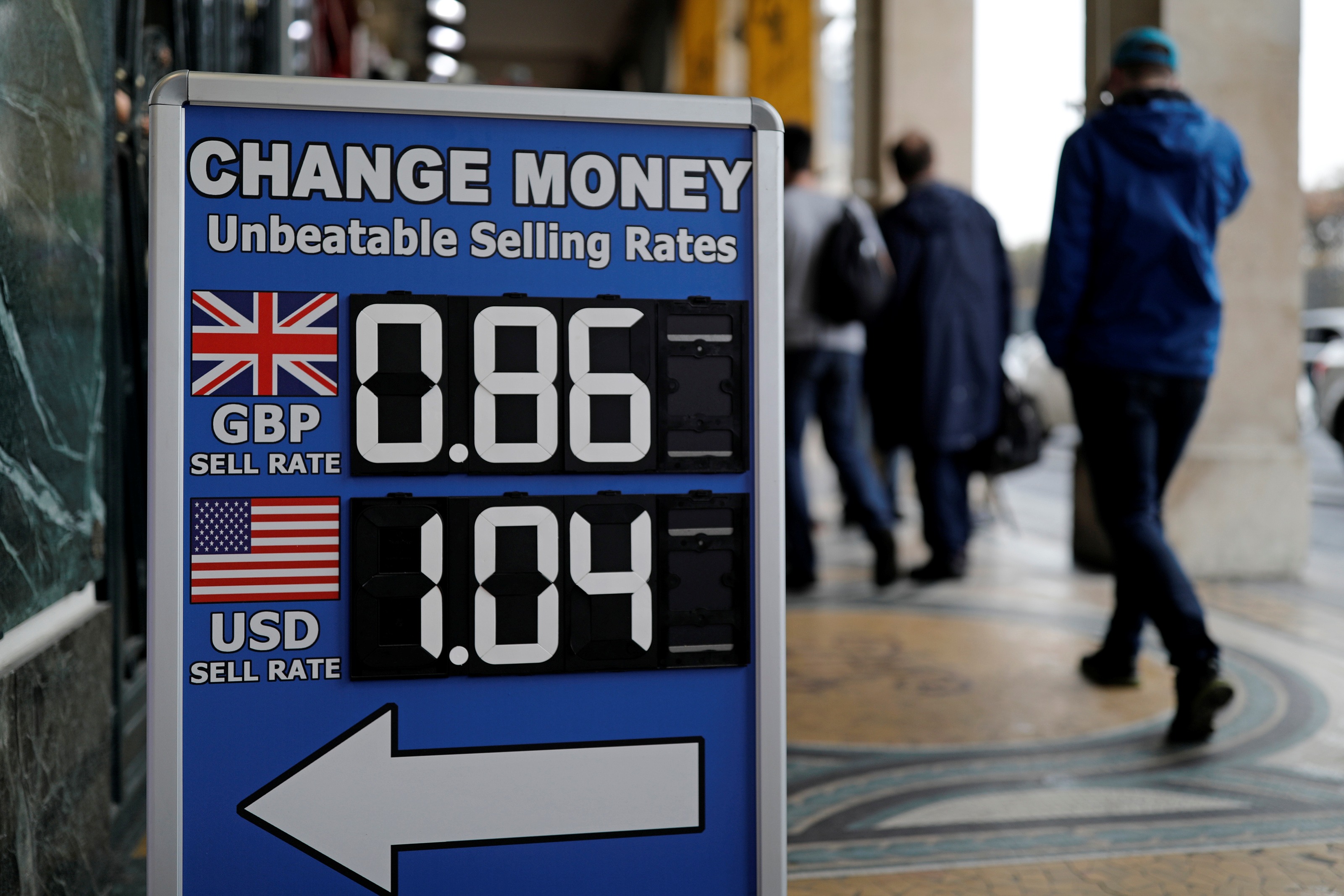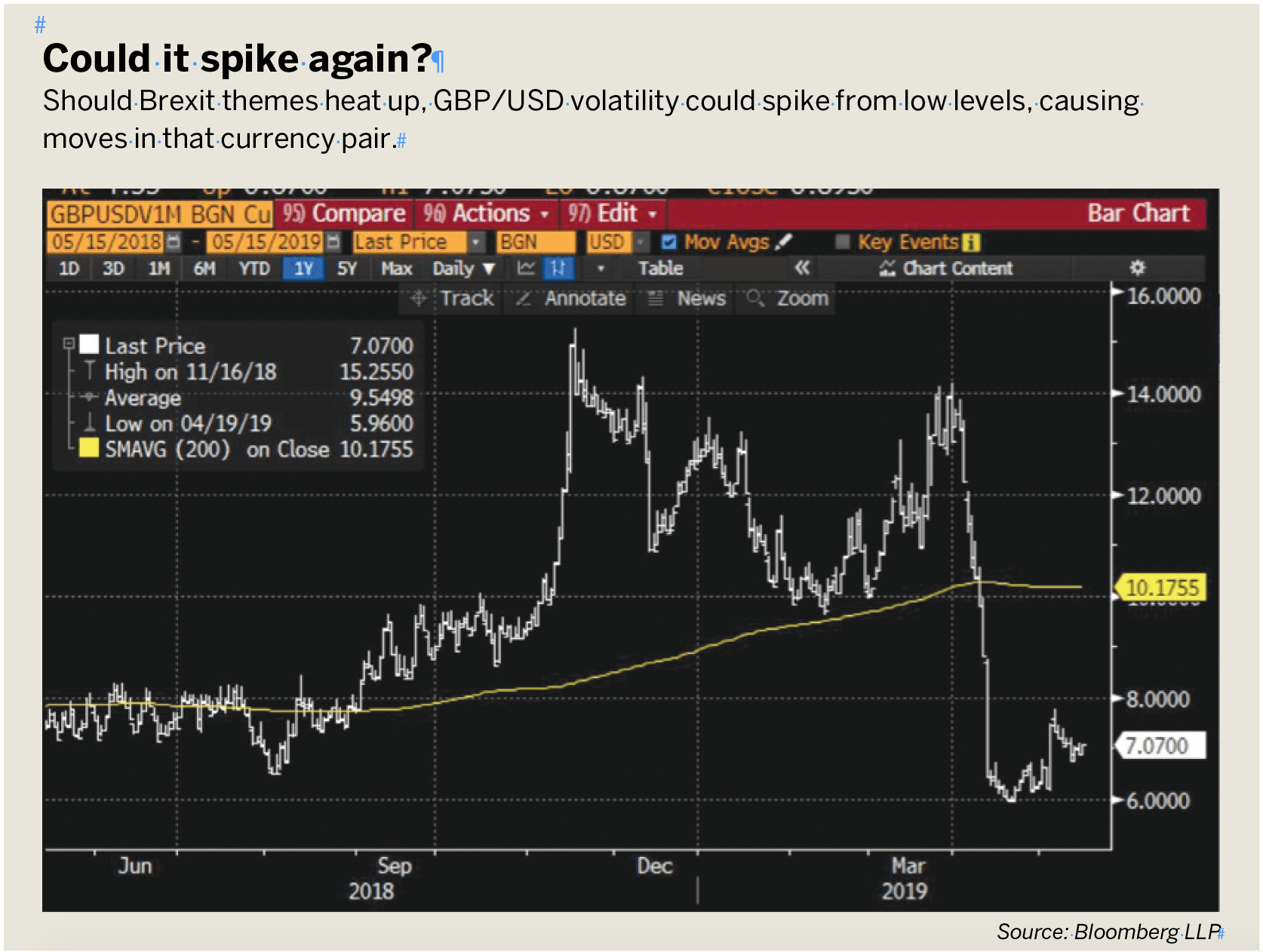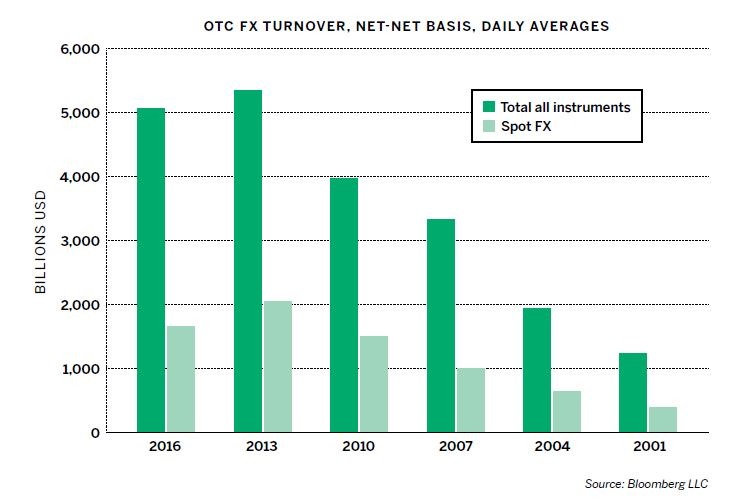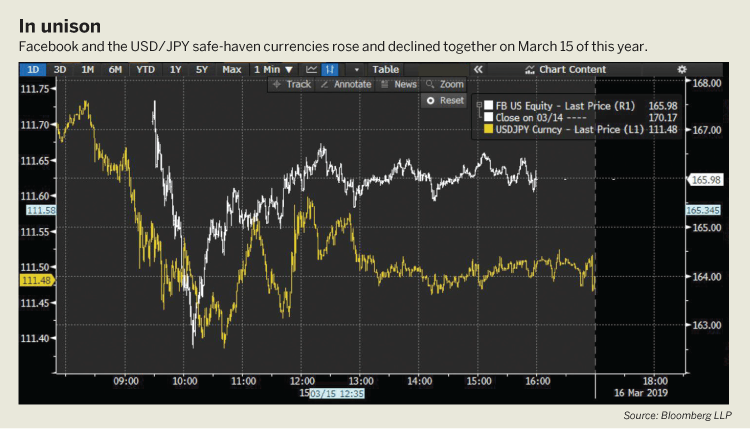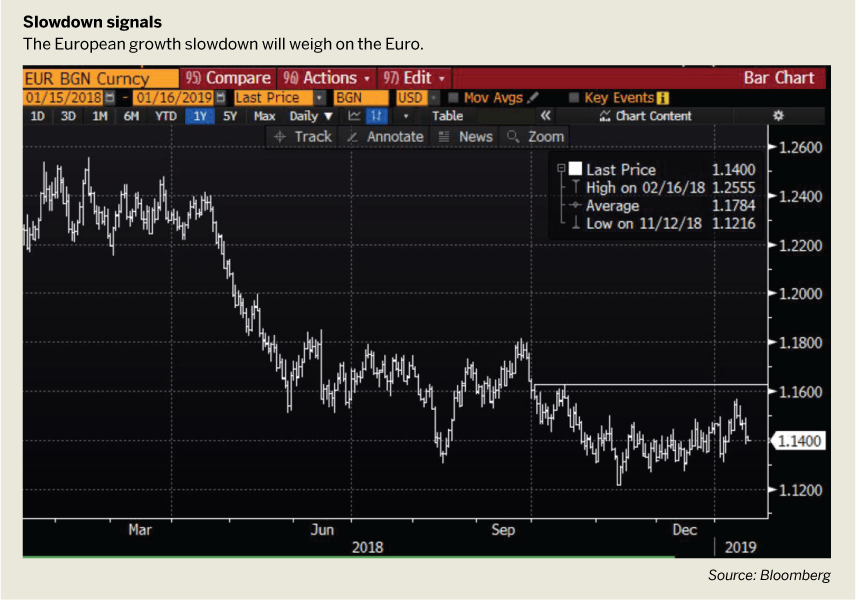2020 Foresight
January’s the time to gauge macro themes that will shape trading and investing in the coming year. “Why bother?” some ask. Unforeseen news and updated data will change investor sentiment as the year unfolds, they protest.
Nonetheless, traders should look ahead to identify major macro themes and event risks to know what to track to help generate trade ideas and manage current positions. As Buddhist teacher Ethan Nichtern says: “The most important thing is having a clear and healthy framework for dealing with uncertainty, which is what most of life turns out to be.” That’s what trading turns out to be—dealing effectively with market uncertainty.
The year begins with an oldie but goodie theme with the potential to raise market volatility. The new Brexit deadline falls on Jan. 31. The U.K. General Election wasn’t over at press time, but the winning party could change the Brexit deadline or influence the withdrawal from the European Union.
But based on Brexit-themed trading in 2019, there could be a relief rally for the pound (GBP) versus the dollar (USD) and the pound versus the euro (EUR) when there’s a definite exit date that has an agreed-upon withdrawal plan. However, on the actual exit day and shortly afterward, disruptive events could occur with instituting the withdrawal plans at the U.K. border and with trade—getting food and medical supplies into the country. That could then raise volatility and negatively impact the pound versus the dollar.
Q4 earnings for U.S. retailers will be released early in 2020 and watched as a gauge of U.S. consumer sentiment and spending. The holiday shopping season was truncated last year because Thanksgiving fell a week later than usual. The strength of the holiday shopping season could act as a leading indicator for the U.S. consumer ahead for the year.
Turning to the U.S. economy, the Federal Reserve signaled at its October monetary policy meeting that it would remain on hold for the foreseeable future, though the policymakers thought that risks to U.S. economic activity remained weighted to the downside. One downside risk that the Fed noted in the October meeting minutes was the ongoing U.S.-China trade negotiations.
Throughout 2019, U.S.-China trade war headlines, presidential tweets and retaliatory tariffs roiled U.S. equity markets. Negative announcements tended to weigh on U.S. equity indexes on the day and also strengthen the safe-haven Japanese yen (JPY) versus the dollar. This year, investors will have to contend with U.S.-China trade negotiations and the market volatility that will come with it. Investors will also question the strength of the U.S. economy, the extent to which it’s slowing and whether the Fed will cut its policy rate again.
Nov. 3 brings the U.S. elections. Financial markets like certainty, so a clear vote outcome on election night would benefit U.S. equities. If the polling is close, that could raise volatility and weigh on investor sentiment. Sectors like tech and health care could suffer if debates or campaigns raise the possibility of stricter regulatory scrutiny.
Macro market themes and risks for 2020 tend to have a lot of binary outcomes. That means investor uncertainty and market volatility will rise when event risks come up. Financial markets dislike uncertainty, so safe-haven investments will remain important for the year ahead, and traders should have their preferred safe-haven trades mapped out and ready to go.
For U.S. equities, consumer staples and select consumer discretionary stocks are preferred because of their minimal global trade war exposure. The safe-haven currency yen will outperform the dollar, and it’s likely most of its G10 counterparts in times of high market volatility. In foreign exchange, G10 central banks have mostly been cutting their policy rates, so relative value trades based on respective policy rates—the search for yield—will be important.
Trade Idea
Buy a six-month 104.00 USDJPY put. Given the uncertainty ahead in 2020, the yen should strengthen because of its safe-haven status.
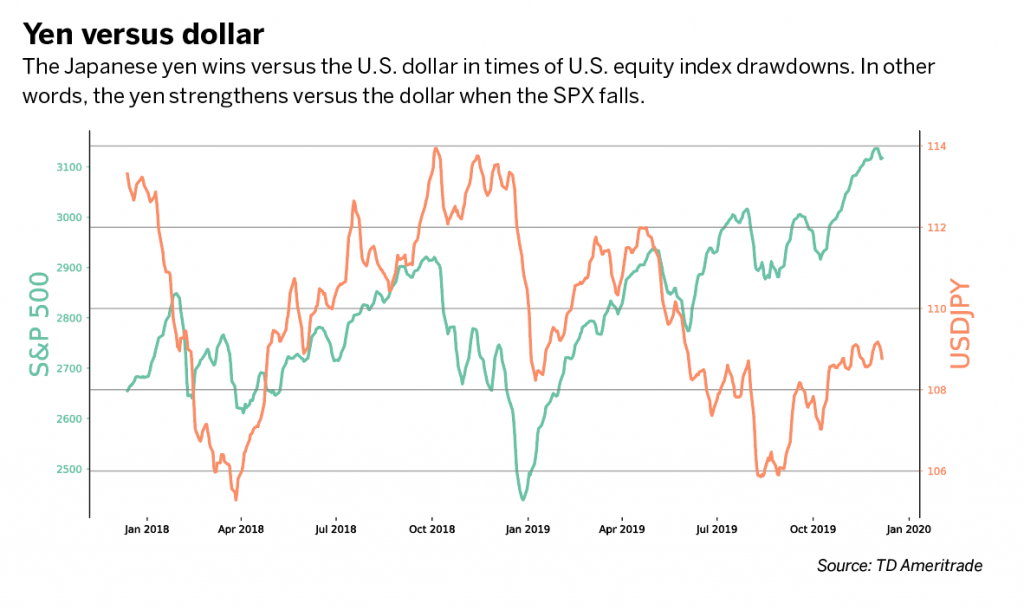
Amelia Bourdeau is CEO of marketcompassllc.com, an advisory firm that provides global macro education and trading strategy to investors of all levels. @ameliabourdeau



